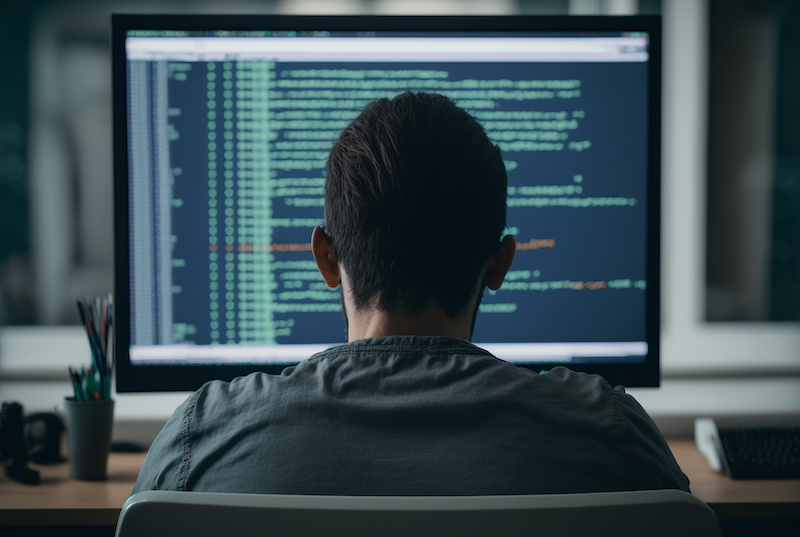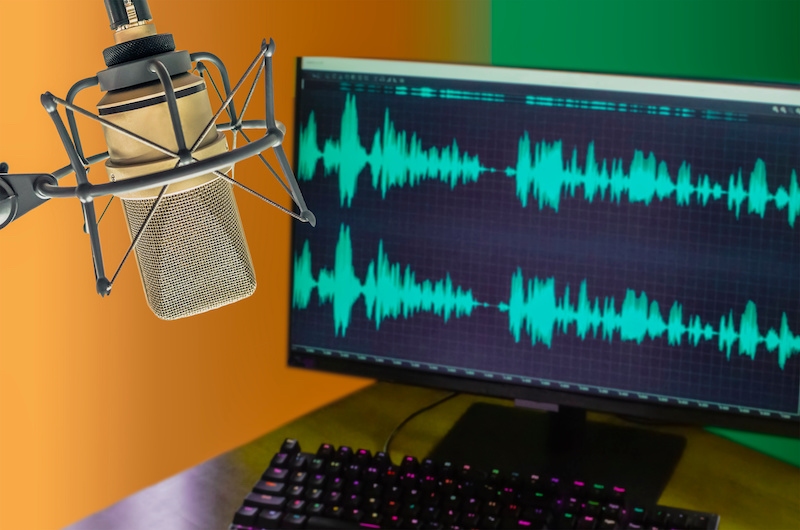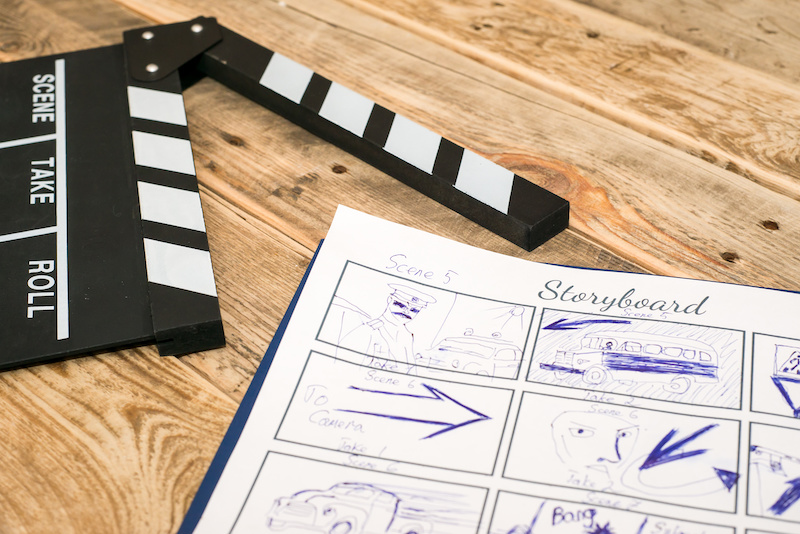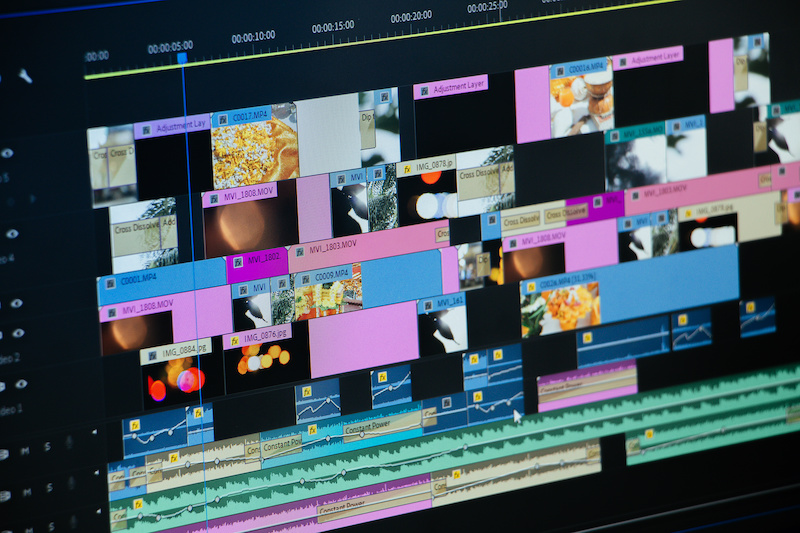Unless you live under a rock, you’ve probably encountered conversations about artificial intelligence (AI) in the last few months. Since the release (and rapid adoption) of ChatGPT, many professionals have been wondering how AI technology might affect their day-to-day roles, making some tasks easier and opening up possibilities for new types of work.
Video production is just one industry that AI has already affected, so let’s take a closer look at what’s going on at the intersection of AI and video content. As you can probably guess, some elements of production have already been streamlined by AI automation while others still require a human touch. We’ll help you understand the difference!
Effects of AI on Video Production
Scriptwriting
One of the most prominent use cases for AI in production is scriptwriting. It can be difficult to understand how to pack all the relevant information into a short video script, and AI tools can help craft the right narrative. Just make sure to have a human copywriter review the AI-driven script to clean up any “robot speak” and add personality as needed.

Skilled copywriters bring a unique set of capabilities to the table, including a deep understanding of language nuances, the ability to decipher creative decisions, contextual adaptation, and a collaborative mindset. Their expertise enhances the effectiveness and emotional resonance of video content, ultimately connecting with viewers on a profound level that AI alone cannot achieve.
Voice-over
Many videos involve voice-over, and AI has made it possible to get instant voice-over audio based on provided text. While you may experience some pronunciation hiccups with words that aren’t found in the dictionary, it’s one of the most popular uses of AI in today’s production space.
How does it work, you ask? With AI, speech synthesis models can generate high-quality, natural-sounding voice-overs in a fraction of the time it would take for human voice actors. This expedites the production timeline and enables rapid iteration and experimentation. AI algorithms can be trained on vast amounts of data, allowing them to mimic various accents, tones, and styles, providing video producers with a wide range of options to choose from.

Additionally, AI-powered voice-over tools offer the convenience of customization, as parameters such as pacing, emphasis, and pronunciation can be easily adjusted to match specific project requirements. The speed, versatility, and efficiency brought by AI in the voice-over process empower video producers to deliver compelling content more efficiently than ever before.
If you’re not ready to commit to full AI voice-over, you can also use AI tools to test the feel of different voices quickly. Pre-AI, you’d have to request a sample audio file from a variety of voice artists to experiment with your video’s tone, but AI can be used to speed up that testing process.
Transcriptions and Subtitles
The concept of using AI for subtitles and transcriptions isn’t exactly new (it’s what YouTube’s automated closed caption generator was already using), but it’s too useful not to mention here. When you provide a video file, AI can auto-generate captions and transcriptions for all your audio content.

A few caveats: AI tools are unlikely to fully capture sound effects and other audio elements that aren’t voice-over, and you should definitely still review the automated text to make sure it’s accurate. Despite these final steps, using AI for your transcriptions is a huge time saver and a win for accessibility!
Analytics
Last but not least, AI can help you dig into your video analytics to understand what’s working and what’s not working in your current video marketing strategy. Your insights could be as granular as “videos do best when a product shot is the first frame” or “14 seconds is our optimal video length.”
If you’re guilty of publishing video content and never giving the results much thought, AI can definitely help you understand your performance and experiment with future content to try to improve.
Areas Where AI Falls Short
As you might have noticed from the list above, AI has a ways to go when it comes to the creative elements of production. Here are just a few of the areas where we’d recommend sticking with human talent.
Creative Concepting
When it comes to the concept behind your video campaign, AI pales in comparison to world-class creative teams. Brainstorming at this stage requires a deep understanding of each client and their goals, general industry knowledge, up-to-date awareness of video trends, and the ability to work with inherently human concepts like memes, metaphors, and other forms of creative thinking.

This stage of the production process is too abstract and open-ended for AI tools to handle effectively. While AI may still may a helpful role in your brainstorming process, it’s just not ready to handle the concepting stage independently.
This stage demands human ingenuity, intuition, and expertise. Creative teams bring a wealth of experience and a keen eye for identifying unique and compelling ideas that resonate with the target audience. They can leverage their knowledge of storytelling techniques, cultural references, and current events to create a concept that is not only visually captivating but also emotionally engaging. The interplay of different perspectives within a creative team fosters dynamic discussions and sparks innovative ideas, fueling the generation of fresh and impactful concepts.
Storyboarding
Storyboarding is where your final video starts to really take shape, and it’s another area where we’d recommend sticking with real-life artists and producers. Successful storyboarding brings the script, creative concept, and on-set visuals together in a cohesive and compelling way, and it’s just too much to attempt to integrate automatically. Again, AI tools can be used to gain inspiration, but the final storyboard should be crafted manually if you want high-quality content.

Working with real-life artists and producers for storyboarding ensures that the final result is unique, tailored to your specific video, and meets your creative vision. They can interpret the script, consider the desired tone and atmosphere, and incorporate on-set visuals, props, and locations into the storyboard. Their expertise allows them to create a cohesive and visually captivating representation of the final video.
Furthermore, collaborating with artists and producers during the storyboarding process fosters communication and alignment among the creative team. It enables discussions and revisions, ensuring that everyone involved shares a clear understanding of the video’s direction and aesthetics. Real-time feedback and adjustments can be made, resulting in a refined storyboard that accurately captures the desired narrative and visual style.
Editing
While there are AI tools that make editing easier, editors are still irreplaceable in the production world. Imagine giving the same storyboard and footage to three different editors with different backgrounds and visual styles. Despite having the same input—like the prompt or instruction you might give an AI tool—you’ll likely end up with three unique videos.

So, while AI may be able to support basic editing functions and speed up some of the manual elements, there’s just no replacement for the human eye and creative expression. When in doubt, the more creative a task is, the less likely AI is to deliver the results you want.
To AI or Not to AI?
AI is quickly transforming the professional landscape for all kinds of careers, but if you’re ready to outsource all your work to the robots, you’re going to be disappointed for now. There’s still immense value in having human minds execute the creative process, especially if you’re working with unique products or theoretical concepts that are hard for AI tools to contextualize.
Plus, remember that AI tools are built on pattern recognition and extrapolating from existing context. If your goal is to come up with a novel video concept that’s never been seen before, AI tools just aren’t built to help you reinvent the wheel.
Our takeaway? Lean into AI for the elements of production where it’s most useful, and rely on human talent for the rest. If scriptwriting and voice-over are common roadblocks for your team, AI may be the perfect solution to help you churn out more content. Just remember that a streamlined, automated process isn’t necessarily an effective process. If your AI-driven content isn’t performing, it may be time to go back to basics!
Try Lemonlight!
While AI tools offer valuable insights and inspiration, there’s no substitute for the expertise and creativity of a dedicated team of professionals. That’s where Lemonlight, a leading full-service video production company, excels. We understand the importance of staying on top of industry trends like AI automation while also recognizing the vital role that humans play in the creative process.
Our experienced and talented creative team works closely with clients, taking the time to understand their unique marketing goals and tailor each video accordingly. We ensure that every video we produce is not only visually stunning but also strategically crafted to achieve maximum impact and effectively communicate the client’s message. With Lemonlight, you can have the best of both worlds – the benefits of technological innovation and the assurance of personalized, human-driven creative solutions. Set up a free call with one of our producers below to learn more.


